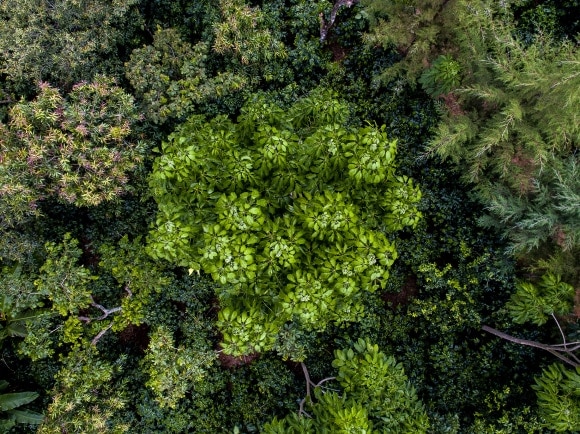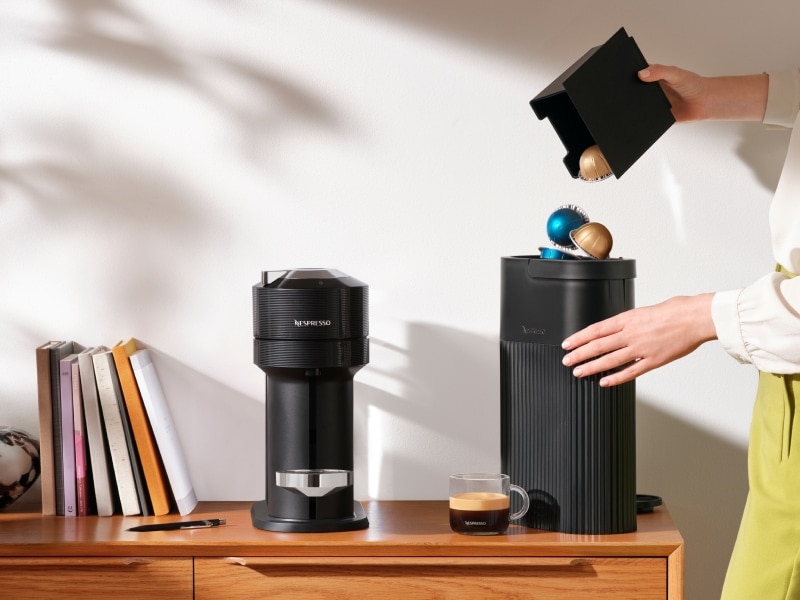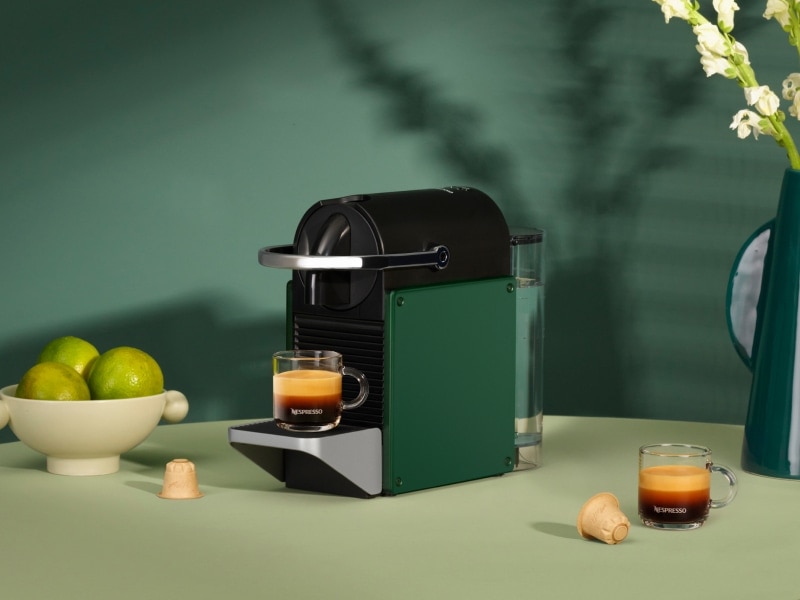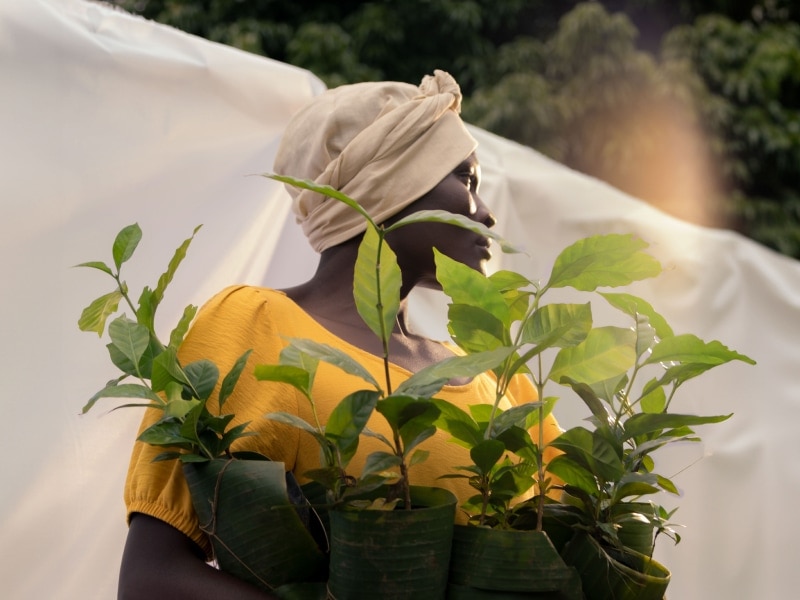Header
A Positive Cup
We are using coffee as a force for good to shape lives and landscapes for the better.
Doing everything to waste nothing
Use as little as possible. Waste as little as possible. Reduce the impact of your Nespresso coffee even further when you recycle your used capsules.
Too good to waste
With Nespresso you only ever use just the right amount of water, energy and coffee to make one cup at a time, minimising waste.
The unforgettable taste of nature
We’re working with farmers to improve their resilience against the impact of climate change and protect the unforgettable taste of Nespresso coffee.
We go beyond
We’re proud to be part of a growing movement of certified B Corps; companies using business as a force for good. For Nespresso, being a B Corp reflects our commitment to empowering farmers, protecting ecosystems, and promoting circularity.

7,400,000 and counting
We’ve planted a total of 7,400,000 trees with our partners. That’s the equivalent of 7,400 hectares (or 10,364 football pitches). Trees enhance the unforgettable taste of Nespresso coffee and help farmers build climate resilience.

Pioneering Sustainable Innovation
Discover how Nespresso is driving positive impact through initiatives that protect farmers, reduce waste, and lower the carbon emissions of your cup.
Guardians of nature
Through the AAA Program, farmers work in harmony with nature to grow high-quality coffee while building environmental and economic resilience.
Refurbished. PRELOVED.
If your Vertuo machine needs repair you can opt for a PRE-LOVED replacement, extending a machine’s lifespan and contributing to the circular economy.
Recycle. Your way.
Nespresso has partnered with the Royal Mail to offer you two convenient ways to recycle your capsules.



